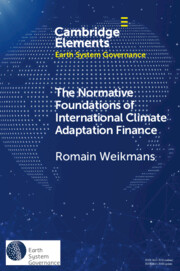Element contents
The Normative Foundations of International Climate Adaptation Finance
Published online by Cambridge University Press: 06 February 2023
Summary
- Type
- Element
- Information
- Online ISBN: 9781108943208Publisher: Cambridge University PressPrint publication: 23 February 2023
References
- 15
- Cited by



